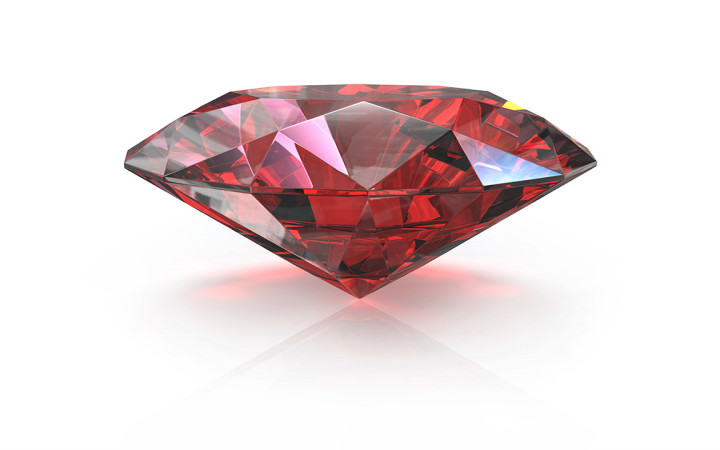Have you ever been to a jewelry store? Even if you don't wear much jewelry, it can be fun to browse the cases, looking at all of the beautiful gemstones.
Some people go straight for the diamond and its shiny, clear beauty. Others might prefer gemstones with a bit of color to them, such as the deep blue sapphire. Of course, if your favorite color is red, then you've probably got your eye on a gorgeous red ruby.
Are rubies simply stones that have been painted red? Or perhaps they're filled with a red liquid of some sort? Could rubies be filled with blood?
Don't worry! Rubies aren't filled with liquid, especially not blood! They're also not simple stones that have been painted red. Rubies are valuable gemstones that are famous for their red color for several reasons.
Rubies are the red version of the mineral known as corundum. Pure corundum is made up of aluminum and oxygen and is colorless. In a ruby, however, small amounts of chromium (about one percent) replace aluminum.
When chromium replaces aluminum in corundum, the chromium atoms absorb certain wavelengths of light and reflect light in the red part of the visible light spectrum. This reflected red light is what your eyes see and gives rubies their distinctive red coloring.
The name ruby comes from the Latin word ruber, which means red. Rubies vary in color from deep, blood red to light pink. In some areas, light pink rubies go by the name pink sapphire.
The traditional birthstone for July, rubies can be found in many places around the world. The best rubies have traditionally come from the Mogok Valley in Myanmar (formerly Burma).
Other countries known for ruby mining include Thailand, Cambodia, India, Pakistan, Afghanistan, Tanzania, Madagascar, Vietnam, Nepal, and more recently under the receding ice shelf of Greenland. In the United States, a few rubies have been found in Montana, North Carolina, South Carolina, and Wyoming.
Rubies are one of the hardest natural gems. In fact, rubies are behind only moissanite and diamond in terms of hardness.
Rather than paint or blood, it's the presence of chromium that turns colorless corundum into the precious stone we know as the ruby. Isn't it cool how a few atoms can turn an otherwise-plain mineral into a valuable jewel?





